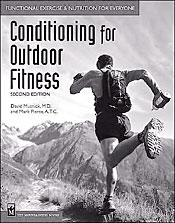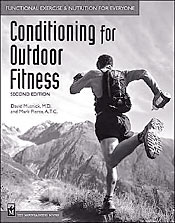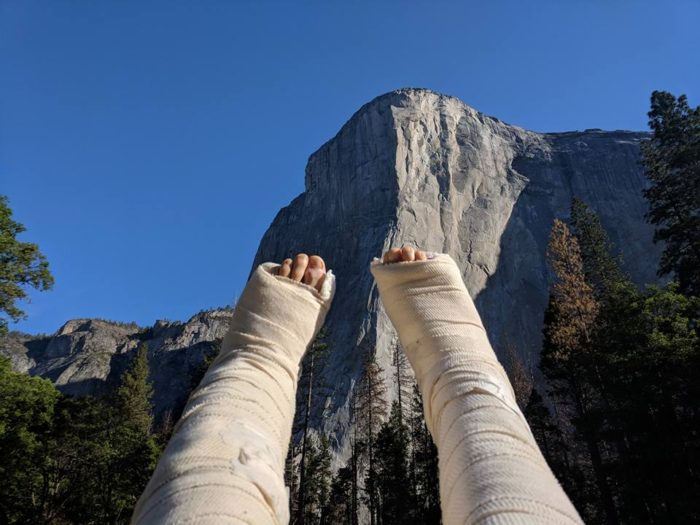- Tahoe’s Nevada Beach Tops the List of Hard-to-Book Campgrounds - 07/17/2024
- Cannabis Watershed Protection Program Cleans Up Illegal Grow Sites - 07/10/2024
- French Fire - 07/05/2024

by Pete Gauvin
There are so many exercise books on the market that it’s difficult to imagine that there’s any real need for another. But for outdoor athletes who pursue more than one sport — that is, most of us — there’s little to be found between the sport-specific training manuals, the vanity-focused muscle-building titles and the celebrity-in-leotard exercise guides.
Welcome to the shelf “CONDITIONING FOR OUTDOOR FITNESS: Functional
Exercise & Nutrition for Every Body, 2nd edition,” (The Mountaineers, $24.95), edited by David Munick, M.D., and Mark Pierce, A.T.C. It comes loaded with wholesome value for outdoor-minded readers seeking sound information and guidance for all-sport fitness and everyday health.
In a single serving of 417 pages, “Conditioning for Outdoor Fitness” brings a fresh, comprehensive blend of the latest scientific and practical information of interest to outdoor athletes and adventure hounds. Since first published in 1999, it has been revised to incorporate the latest medical research and expanded by nearly 100 pages with new exercises and material on nutrition, weight loss and disease prevention.
Written by a team of specialists in sports medicine, nutrition, physical therapy, and athletic training, “Conditioning for Outdoor Fitness” emphasizes “functional training” — training your body in ways that mimic how you actually use them in a variety of sports, from climbing to cycling, trail running to windsurfing, sea kayaking to telemark skiing.
With functional training, your musculoskeletal system will respond to the same forces of gravity and experience similar balance and coordination challenges as in the activity itself. So, the theory goes, these exercises can promise to fine-tune your body to meet the specific demands of your sport in ways that other conditioning programs cannot.
Thirty-one chapters are grouped in four broad sections: Basic Principles, Body Regions, Conditioning for Outdoor Activities, and Optimal Wellness. Basic Principles includes excellent background information on physiology, nutrition, aerobic conditioning and interval training, stretching, and strength, balance and agility training. Those without a gym membership or an
aversion to exercising in walled spaces will also appreciate the chapter on “Creative Use of the Outdoors in Training.”
Body Regions tackles anatomy and injury prevention and treatment, and then follows with chapters that provide insight on the function, use and training of specific body regions from the abdominals to the foot, the neck and back to the forearm and hand. Specific exercises are recommended and illustrated with photos; icons indicate which sports they’re of value to.
Conditioning for Outdoor Activities includes in-depth discussions on the demands of and specific exercises for hiking, backpacking, rock climbing, mountaineering, snowboarding and skiing, kayaking and rowing, road and mountain cycling, running and windsurfing.
Optimal Wellness discusses body posture and movement patterns, lifestyle considerations, conditioning for seniors and others with compromising health
issues, and special issues for women athletes, such as weight control, osteoporosis and menstrual function.
In total, more than 180 exercises are profiled and grouped according to
how they benefit certain muscle groups, general fitness or specific sports. Best of all, this book doesn’t skimp on the science or gloss over the complex functioning of the human body to appeal to a broad audience.
Just as “Freedom of the Hills” is the go-to bible of mountaineering, “Conditioning for Outdoor Fitness” could become THE reference manual for health and fitness information geared for an outdoor lifestyle.













